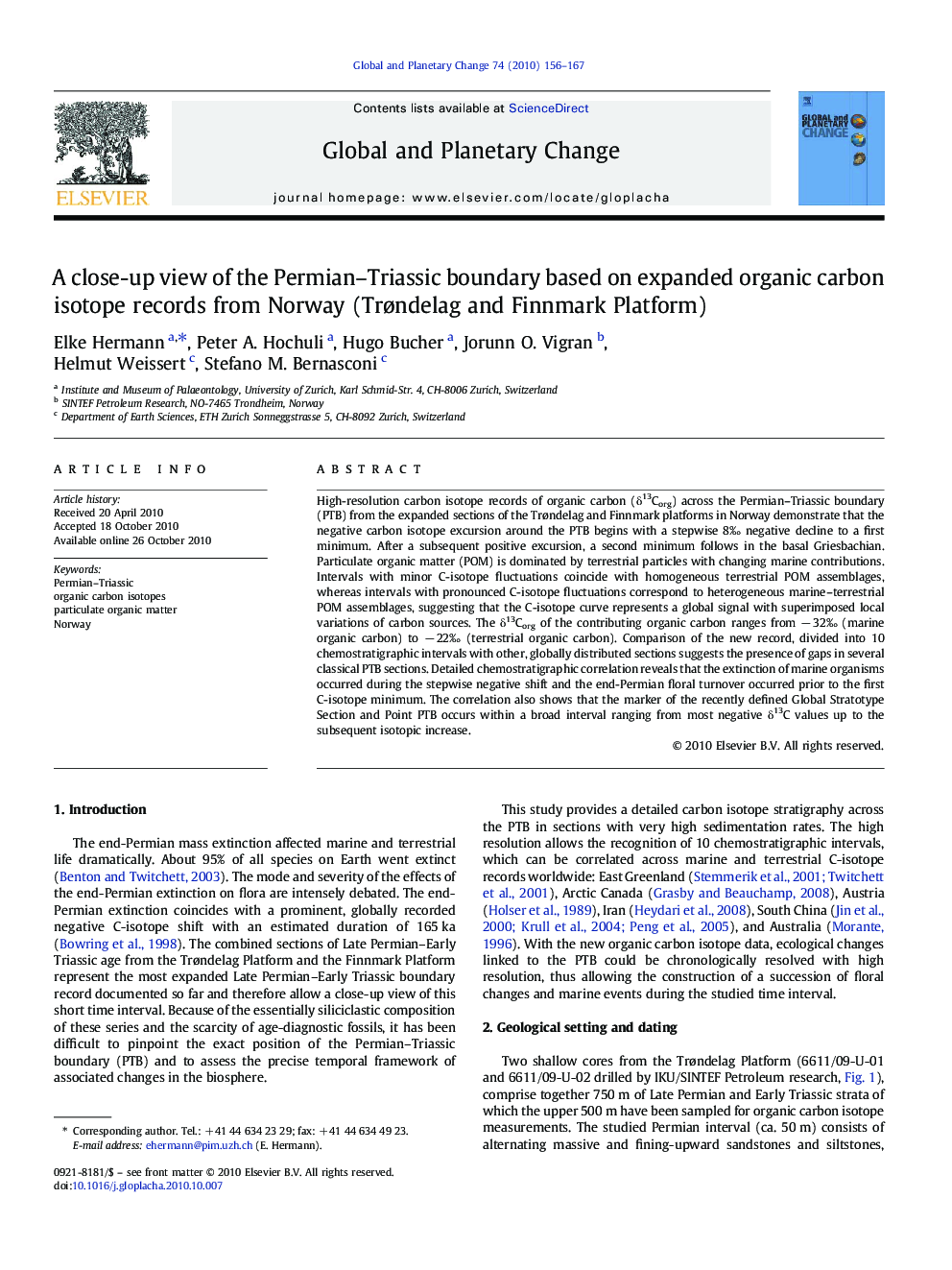| کد مقاله | کد نشریه | سال انتشار | مقاله انگلیسی | نسخه تمام متن |
|---|---|---|---|---|
| 4463897 | 1621702 | 2010 | 12 صفحه PDF | دانلود رایگان |

High-resolution carbon isotope records of organic carbon (δ13Corg) across the Permian–Triassic boundary (PTB) from the expanded sections of the Trøndelag and Finnmark platforms in Norway demonstrate that the negative carbon isotope excursion around the PTB begins with a stepwise 8‰ negative decline to a first minimum. After a subsequent positive excursion, a second minimum follows in the basal Griesbachian. Particulate organic matter (POM) is dominated by terrestrial particles with changing marine contributions. Intervals with minor C-isotope fluctuations coincide with homogeneous terrestrial POM assemblages, whereas intervals with pronounced C-isotope fluctuations correspond to heterogeneous marine–terrestrial POM assemblages, suggesting that the C-isotope curve represents a global signal with superimposed local variations of carbon sources. The δ13Corg of the contributing organic carbon ranges from − 32‰ (marine organic carbon) to − 22‰ (terrestrial organic carbon). Comparison of the new record, divided into 10 chemostratigraphic intervals with other, globally distributed sections suggests the presence of gaps in several classical PTB sections. Detailed chemostratigraphic correlation reveals that the extinction of marine organisms occurred during the stepwise negative shift and the end-Permian floral turnover occurred prior to the first C-isotope minimum. The correlation also shows that the marker of the recently defined Global Stratotype Section and Point PTB occurs within a broad interval ranging from most negative δ13C values up to the subsequent isotopic increase.
Journal: Global and Planetary Change - Volume 74, Issues 3–4, December 2010, Pages 156–167